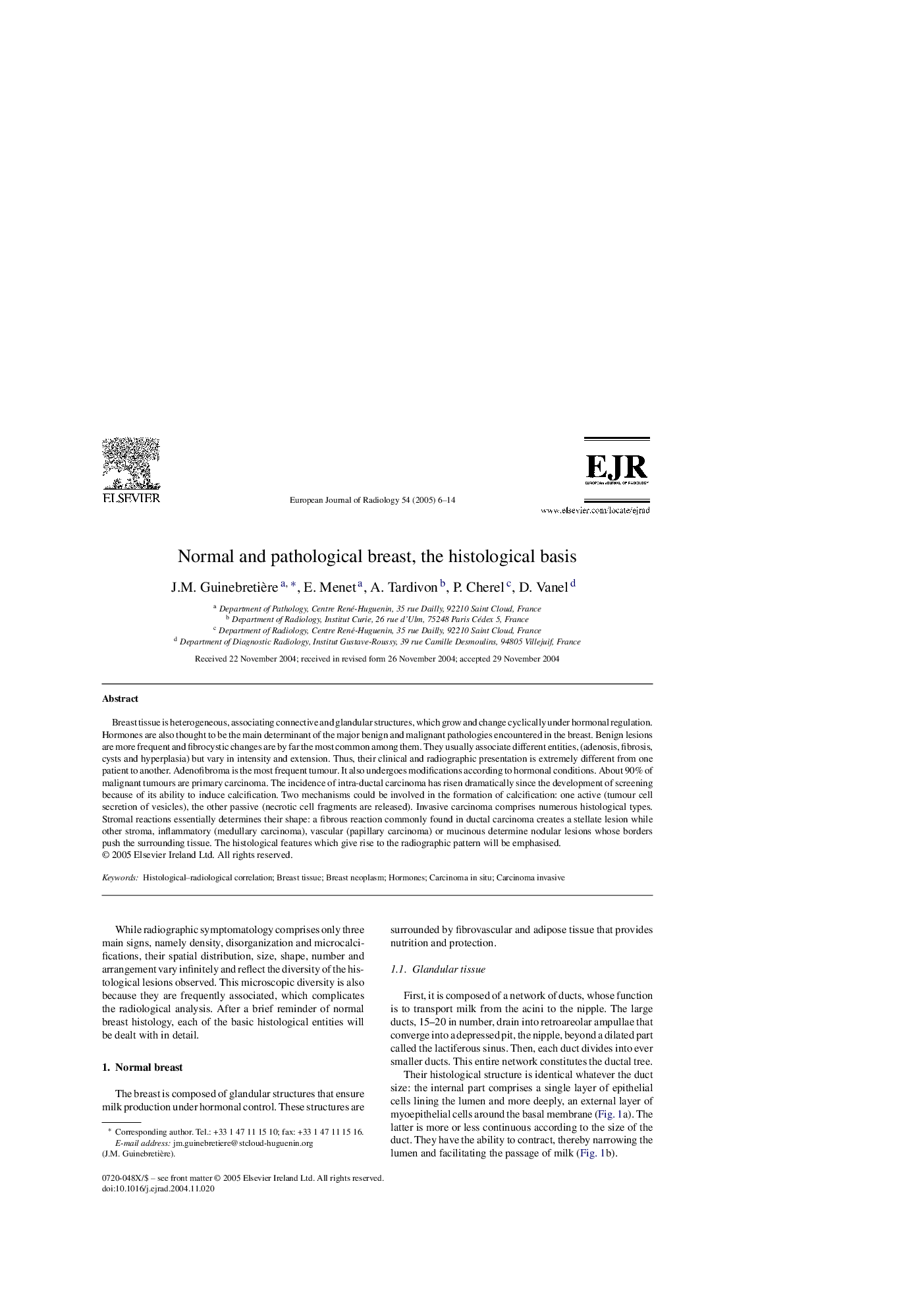| Article ID | Journal | Published Year | Pages | File Type |
|---|---|---|---|---|
| 10097555 | European Journal of Radiology | 2005 | 9 Pages |
Abstract
Breast tissue is heterogeneous, associating connective and glandular structures, which grow and change cyclically under hormonal regulation. Hormones are also thought to be the main determinant of the major benign and malignant pathologies encountered in the breast. Benign lesions are more frequent and fibrocystic changes are by far the most common among them. They usually associate different entities, (adenosis, fibrosis, cysts and hyperplasia) but vary in intensity and extension. Thus, their clinical and radiographic presentation is extremely different from one patient to another. Adenofibroma is the most frequent tumour. It also undergoes modifications according to hormonal conditions. About 90% of malignant tumours are primary carcinoma. The incidence of intra-ductal carcinoma has risen dramatically since the development of screening because of its ability to induce calcification. Two mechanisms could be involved in the formation of calcification: one active (tumour cell secretion of vesicles), the other passive (necrotic cell fragments are released). Invasive carcinoma comprises numerous histological types. Stromal reactions essentially determines their shape: a fibrous reaction commonly found in ductal carcinoma creates a stellate lesion while other stroma, inflammatory (medullary carcinoma), vascular (papillary carcinoma) or mucinous determine nodular lesions whose borders push the surrounding tissue. The histological features which give rise to the radiographic pattern will be emphasised.
Related Topics
Health Sciences
Medicine and Dentistry
Radiology and Imaging
Authors
J.M. Guinebretière, E. Menet, A. Tardivon, P. Cherel, D. Vanel,
